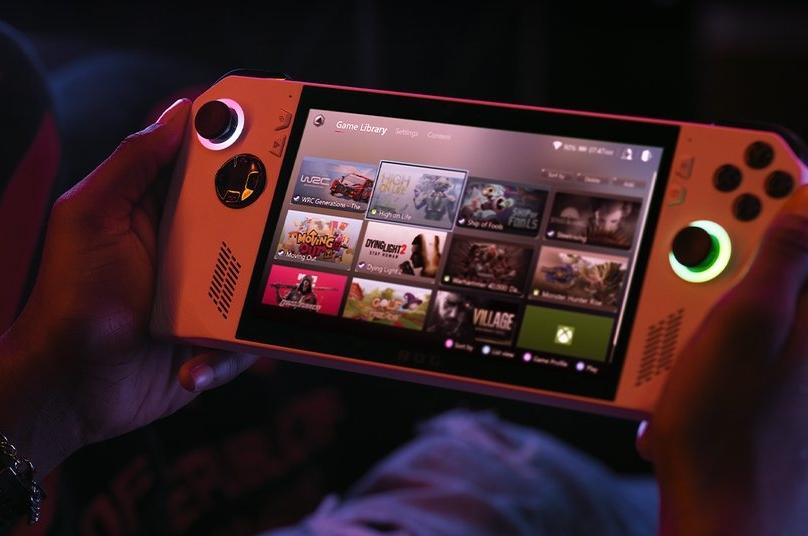二手筆電收購 收購ASUS筆電 收購ROG電競筆電 收購ACER筆電 收購Msi電競筆電 收購微軟SURFAC 看全文

我們專業經營各項3C高價回收,收購電競筆電,文書筆電,輕薄筆 電,MSI,ASUS,ACER,HP,Razer,GIGABYBE,Microsoft,,多通路多管道,非坊間垃圾回收價,價格不怕您比較,歡迎企業戶汰舊換新,續約販賣,分期換現,電競筆電, 二手汰舊,手機,筆電,相機,鏡頭,空拍機
華碩啟動2K Zenbook 14X OLED太空版本,帶有14英寸屏幕,12。GenIntel I9-12900H和3.5英寸通知的屏幕以及更多信息
Asus launches $2K Zenbook 14X OLED Space Edition with a 14-inch display, 12th Gen Intel i9-12900H, and a 3.5-inch display on the lid for notifications and more
二手筆電收購二手筆電收購
Nvidia’s RTX 4080 and 4090 GPUs are amazing performers. They are also amazingly expensive, starting at $1,200 and $1,500 and going way up for cards from partners like MSI, Gigabyte, and 二手筆電收購asus. The 4080 is nearly twice as expensive as the original $699 MSRP for the RTX 3080.
These price hikes are caused in part by pandemic-era concerns like supply chain snarls and inflation and partly by a cryptocurrency-fueled boom (now over, blessedly) that encouraged a network of scalpers to snap up every single high-end GPU they could. Also at play was a lack of competition and the increasing cost and complexity of building gigantic, monolithic chips on cutting-edge manufacturing processes. Today, AMD is trying to solve the latter two problems with the launch of its Radeon RX 7900 series GPUs.
At $899 and $999, the RX 7900 XT and RX 7900 XTX are still objectively expensive—but because they’re not a further escalation over the starting price of the RX 6900 XT, both cards are what pass for a bargain in today’s GPU market. If you’re looking for cards that can consistently handle 4K gaming at 60 fps and higher, these GPUs do it for less than Nvidia’s latest, and they’re good enough and fast enough that they’ll hopefully start driving Nvidia’s prices down a bit, too.
But Nvidia still retains some key advantages that complicate an easy David-and-Goliath narrative. These GPUs don’t quite feel like a Ryzen moment for AMD’s graphics division—a turning point where a scrappy AMD manages to make a big dent in the market share of an entrenched, complacent competitor. But if you can actually find them for their starting prices, they’re the first sign we’ve had in a while that some relief is coming for high-end-but-price-conscious PC gamers.
The RX 7000 series is the third version of the RDNA GPU architecture, also occasionally referred to as “Navi,” after the codenames of the GPU chips themselves. RDNA 3 doesn’t add anything that feels as significant as RDNA 2’s ray-tracing support, but AMD has added plenty of extra hardware and made important under-the-hood changes.
The most significant is a new chiplet-based approach, similar in concept to the one AMD uses for its Ryzen CPUs. Rather than building the entire GPU die on one manufacturing process—increasing the die’s size and therefore the chances that some or all of it could be defective—AMD is building the main Navi 3 GPU die on a 5 nm TSMC manufacturing process and a series of smaller memory controller dies (MCDs) on a 6 nm process. These chips are all linked together with a high-speed interconnect, which AMD says can transfer data at speeds of up to 5.3 terabytes per second.
The main graphics compute die (GCD) contains most of the hardware you think of when you think of a GPU—compute units, shaders, ray-tracing hardware, the media encoding and decoding block, and display output. Both the 7900 XTX and XT use the same Navi 31 GCD, but the XTX runs at higher clocks and has more CUs and stream processors enabled. The XTX has 96 CUs and 6,144 stream processors, while the XT has 84 CUs and 5,376 stream processors. Both cards represent a jump up from the Navi 21 die used in the RX 6900 series, which maxed out at 80 CUs and 5,120 stream processors (and that’s before you account for other performance-boosting improvements).
The MCDs all include a single 64-bit memory controller and 16MB of AMD’s Infinity Cache, and they demonstrate the advantages of a chiplet-based approach. The 7900 XTX has a 384-bit-wide memory bus and 96MB of Infinity Cache, where the 7900 XT has a 320-bit bus and 80MB of cache; to accomplish this, all AMD has to do is remove an MCD. The exact same MCDs can be reused up and down the stack with all of the different RDNA 3 GCDs that AMD chooses to release, from low-end products with a single MCD up to midrange GPUs that use between two and four. Defects in MCD dies won’t require the larger, more complex GCDs to be thrown out or binned, and vice-versa.
In the realm of all-new features for RDNA 3, there are three things of note. First, the GPUs include new AI accelerators, which could be useful both for the plethora of AI-assisted content creation that has sprung up in the last year and for AI-assisted upscaling (if AMD chooses to implement it in some future version of its FSR upscaling algorithm; both DLSS and XeSS use AI for upscaling, but FSR 2.0 doesn’t).
Second, the video encoding and decoding block supports hardware-accelerated encoding for the AV1 video codec, just like the RTX 4000 series and Intel’s Arc GPUs. This should be useful for both content creators and streamers who want to stream higher-resolution video or video at the same resolution while using less bandwidth.
And third, the “Radiance Display Engine” adds DisplayPort 2.1 support to the GPUs. Monitors that take full advantage of DisplayPort 2.1’s extra bandwidth don’t really exist as of this writing, but when they do, RDNA 3 GPUs will be able to drive 4K displays at up to 480 Hz and 8K displays at up to 165 Hz.
華碩第一個棕櫚 – 數字平台“ Rog Ally”。第一天,年長的球員允許許多玩家首次報告辛辣的在線演示文稿。Ally的顯示比率為16:9,屏幕塗層為1920 x 1080和連續的120 Hz,體重在1280×800和16:10上的體重為1280×800,並且體重含有60。再次計算,重新計算,腰帶徽標rog的眼睛的眼睛設置並提供允許玩家允許玩家解決RGB燈。2.支持Windows 11系統-Cynets未顯示ROG AlolyAr和Windows LEP的改進和月經的經紀人,沒有其他信息。Alerature Arma尚未確認ROG Ally Game Cut,這是第三台甲板遊戲,門檻為399美元,而且價格揭示了Wenwan的價格為13,380元Yuan Yuan.:18-June。
 華碩首款掌上遊戲機「ROG Ally 」。(圖翻攝華碩ROG官方推特)
華碩首款掌上遊戲機「ROG Ally 」。(圖翻攝華碩ROG官方推特)
華碩近日除發表今年新一代的電競旗艦ROG Phone 7 系列雙機之外,針對先前於官方推特發佈的首款掌上型遊戲機「ROG Ally」,稍早華碩ROG官方推特則是再度帶來了「ROG Ally 即將於近期推出」的最新預告消息,讓不少玩家們抱持著高度的期待。
至於發售日期,官方仍保密到家,僅於該則預告Po文,附讓玩家可以於BestBuy 華碩官方線上旗艦商店,填寫註冊Email資訊的連結,以在第一時間獲得ROG Ally 上市預購的最新資訊。
據官方先前發佈的 ROG Ally 預熱宣傳影片,以及近期外媒傳聞爆料消息,彙整 華碩首款掌上遊戲機ROG Ally 的規格配置方面,主要的重點包括有:
一、七吋觸控螢幕
跟VALVE推出的 Steam Deck 掌機一樣,華碩預計發表的 ROG Ally 也配置 7吋觸控螢幕,左右兩側並有專屬的操控手把。不同的是, 華碩ROG Ally 採16:9螢幕比例、螢幕解析度為1920 X 1080並支援120Hz、機身重量約608克。 Steam Deck的螢幕解析度則為1280×800、16:10比例,機身重量為669克。
另,機背設置有ROG 敗家之眼的信仰LOGO,並提供讓玩家可自定義RGB燈效的功能。
二、支援 Windows 11 系統、搭客製化處理器
目前華碩官方僅透露 ROG Ally 支援微軟 Windows 11 系統,並可外接獨立顯示卡。。至於處理器、內建記憶體等規格配置仍未有進一步消息。不過,據外媒獲得爆料客情報稱,ROG Ally 遊戲掌機,將搭載客製化的處理器,推估很可能會是採用AMD Zen 4 + RDNA 3 的組合架構。但尚未獲得華碩官方的證實。
三、售價
VALVE推出的 Steam Deck 遊戲掌機,入手最低門檻價格為399美元,台灣建議售價為13,380元起。據外媒Notebookcheck 爆料稱華碩 ROG Ally 遊戲掌機,上市價格帶很可能或落在650至700美元之間(約合台幣19,837至21,363元左右),上市時間點為今年第二季、四月至六月期間。
二手筆電收購 二手筆電收購